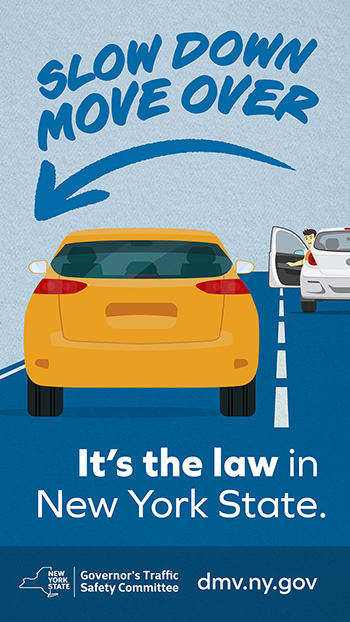Move Over Law Has Been Expanded in New York
According to the AAA Foundation, between 2015 and 2021 there were 123 roadside assistance providers killed by passing vehicles. In New York, there were 37 people killed outside disabled vehicles between 2016 and 2020. For this reason, every state in the country has a move over law to protect law enforcement officers and other first responders stopped on roadways. As such, New York has expanded its law to protect everyone stopped on the side of the road.
What is New York’s Move Over Law?
In 2010, New York’s first move over law went into effect. Pursuant to that enactment, the law is designed to prevent collisions with emergency vehicles. Originally, the law only required drivers to move over for emergency or hazard vehicles, including police cars, fire trucks, and ambulances. In the years since, it was expanded to include construction and maintenance vehicles.
Under Vehicle and Traffic Law § 1144-a, a person convicted of failing to move over for an emergency, construction, or hazard vehicle can receive two points on their license. Additionally, they may have to pay fines up to $450 as well as surcharges of up to $93. Because this is a moving violation, it will also impact their insurance rates. Moreover, the DMV can consider this infraction when reviewing someone’s driving record if the person is alleged to be a dangerous driver.
Expansion of the Move Over Law in New York
In September 2023, Governor Hochul signed a bill (A1077/S5129) to further improve the existing law to include all vehicles stopped on roadways. On Wednesday, March 27, 2024, the expanded law went into effect.
Now, the law covers all vehicles stopped along the road – not just emergency, construction, or hazard vehicles. Under the expanded law, when a driver is approaching a vehicle stopped along either shoulder of the road, a driver should:
- change into a lane not immediately adjacent to the vehicle, or
- slow down to a reasonable speed if unable to safely make a lane change.
If a driver is unable to switch lanes, he or she is advised to turn on their directional to signal their intent to move over. Additionally, the driver should slow down and drive as carefully as possible around the stopped or disabled vehicle. For more information, visit the Governor’s Traffic Safety Committee at https://trafficsafety.ny.gov/move-over-law.
References:
- NYS Governor, Governor Hochul Reminds New Yorkers About Expanded Move Over Law to Include All Stopped Vehicles on Highways (Mar. 19, 2024). Available at: https://www.governor.ny.gov/news/governor-hochul-reminds-new-yorkers-about-expanded-move-over-law-include-all-stopped-vehicles (last accessed Mar. 29, 2024).
- Breanna Fuss, “New York’s Move Over Law now applies to all vehicles stopped on the side of the road,” Spectrum News 1 (Mar. 27, 2024). Available at: https://spectrumlocalnews.com/nys/central-ny/public-safety/2024/03/27/new-york-s-move-over-law-now-applies-to-all-vehicles-stopped-on-the-side-of-the-road (last accessed Mar. 29, 2024).
Image: Public domain image


